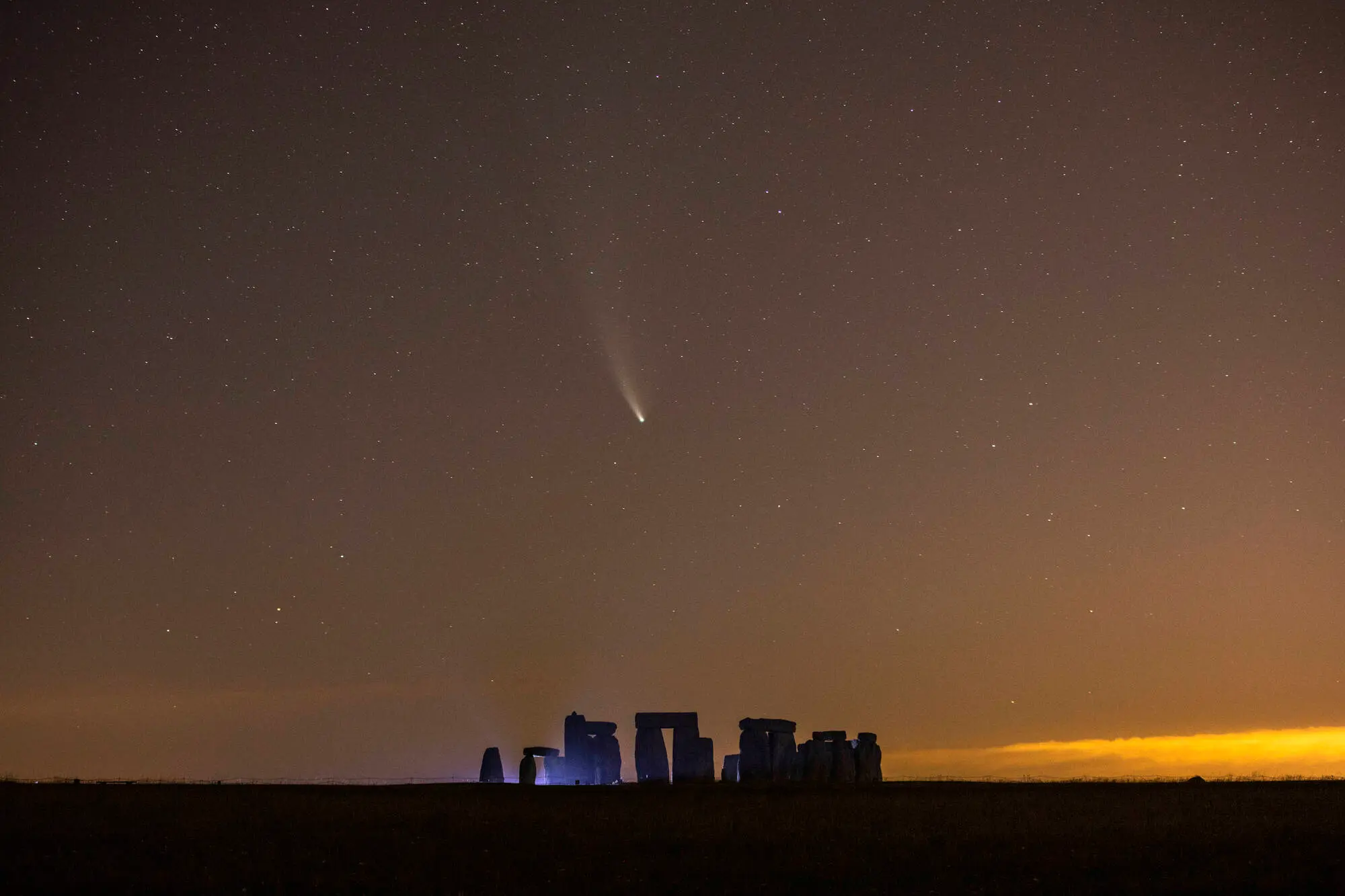Mysterious 3I/ATLAS object vanishes and reappears as two spacecraft begin their race to uncover its secrets
-
 SALISBURY, ENGLAND - JULY 21: Comet NEOWISE passes over Stonehenge in the early hours of July 21, 2020 in Salisbury, England. Comet NEOWISE, the brightest seen in the Northern Hemisphere in 25 years, was discovered by Nasa’s Near-Earth Object Wide-field Infrared Survey Explorer (NEOWISE) mission on March 27. The comet is currently visible after sunset and will have its closest encounter with Earth on July 23 when it will be around 64 million miles away. (Photo by Dan Kitwood/Getty Images)
SALISBURY, ENGLAND - JULY 21: Comet NEOWISE passes over Stonehenge in the early hours of July 21, 2020 in Salisbury, England. Comet NEOWISE, the brightest seen in the Northern Hemisphere in 25 years, was discovered by Nasa’s Near-Earth Object Wide-field Infrared Survey Explorer (NEOWISE) mission on March 27. The comet is currently visible after sunset and will have its closest encounter with Earth on July 23 when it will be around 64 million miles away. (Photo by Dan Kitwood/Getty Images)The appearance and disappearance of 3I/ATLAS are intriguing researchers and scientists, who are studying the new visitor in our solar system, which is currently hidden behind the Sun. The sun’s bright light is making it difficult to analyze the interstellar object, and recently, they have observed something unusual happening as it reaches its closest point to the Sun, perihelion, on October 29, 2025.
This third interstellar object is not currently visible from Earth. Which is why, to avoid losing track of it, two spacecraft, GOES-19 and SOHO, are monitoring it closely. These satellites observed that the comet became nearly ten times brighter as it approached the Sun. Scientists say this happened because the Sun’s heat caused the comet to release more gas and dust.
The two spacecraft are in a “race” toward the comet, and their goal is to study:
What it’s made of and how it behaves. Second, to build models to warn us if other similar space objects come near Earth, and third, to learn more about interstellar objects that enter our solar system.
New interesting facts observed by scientists about 31/ATLAS
According to reports shared by arXiv, it states that due to the interstellar object being ‘’on the opposite side of the Sun from Earth,’’ it went out of sight from the telescopes of our planet. However, some space telescopes, such as STEREO-A, SOHO, and GOES-19, were able to continue observing it.
The GOES-19 images showed that the comet had a large glowing cloud (coma) around it, roughly four arcminutes wide (a way to measure how big it looks in the sky). Finally, the color data showed that the comet appeared bluer than the Sun, indicating that gas, not just dust, was emitting a significant portion of the light near the Sun.
The reason for releasing a bluish light meant that the Sun’s heat was melting its ice, turning it into gas and dust. These gases became ionised (electrically charged) by sunlight, which made the comet shine even brighter.
The NASA researcher Zhang wrote (via Times of India),
“This brightening behaviour mirrors that of highly active comets within our solar system, but for an interstellar body, it’s extraordinary. We are essentially witnessing material from another star system responding to our Sun for the first time.”
Currently, its view is blocked by the Sun’s glare, but scientists have estimated that 3I/ATLAS will soon “reappear in early December 2025 when it moves away from the Sun.” At that time, researchers and space enthusiasts will be on a hook as it will allow them to observe its “long tail” with the help of telescopes. By March 2026, the interstellar object will reach near Jupiter, and will help researchers to compare this comet’s makeup with comets that come from our own solar system.
The comet is moving very fast and has been traveling through space for billions of years, pushed by the gravity of stars and clouds of gas it passed by. NASA scientists and experts believe that it could be the oldest comet ever found. About 7.6 billion years old, which means it was formed three billion years before our solar system. It’s also huge, around 5.6 kilometers (wide), according to the Hubble Space Telescope, possibly the biggest interstellar object ever discovered.
TOPICS: 3I/ATLAS
- YouTube removes AI-generated 3I/ATLAS videos impersonating Harvard Professor Avi Loeb
- New analysis presents unusual features documented in the 3I/ATLAS trajectory and activity
- Periodic light variability in interstellar object 3I/ATLAS linked to jet activity
- What we know so far about 3I/ATLAS: Everything understood to date